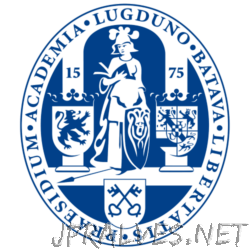Other

“A block of rubber that can count to ten and even remember the order in which it is pressed. Physicists Martin van Hecke and Lennard Kwakernaak (Leiden University and AMOLF Amsterdam) publish about this latest metamaterial in the journal Physical …

“As early as 2030, batteries in electric vehicles could fully meet the need for short-term electricity storage around the world. By connecting them to the power grid they can provide their stored energy, improving energy security and enabling renewable technologies …

“How can you solve equations that define not ‘just’ curves, but also two-dimension surfaces or even higher-dimensional objects? That’s the big question that mathematician Martin Bright and his team will be trying to answer. They’ve received a NWO …

“The Gouy-Chapman theory describes what happens near an electrode when it is in contact with a salt solution, but this description does not match reality. Researcher Kasinath Ojha, assistant professor Katharina Doblhoff-Dier and professor Marc Koper present a new version …

“A piece of corrugated rubber can function as a simple computer, displaying memory and displaying the ability to count to two. Leiden physicists describe the computing rubber in the journal PNAS. ‘Simple materials can process information, and we want to …

“CERN has approved the construction and operation of SND@LHC, a neutrino detector at the Large Hadron Collider. It’s a precursor for SHiP, a detector meant to detect dark matter. Leiden physicist Alexey Boyarsky is one of the initiators …

“Superconducting devices such as SQUIDS (Superconducting Quantum Interferometry Device) can perform ultra-sensitive measurements of magnetic fields. Leiden physicsts invented a method to 3D-print these and other superconducting devices in minutes. ‘Fabricating superconducting devices on a computer chip is a multi-step …

“From prow to stern, this little boat measures 30 micrometers, about a third of the thickness of a hair. It has been 3D-printed by Leiden physicists Rachel Doherty, Daniela Kraft and colleagues. The image was made using an electron microscope …

“Leiden physicists and international colleagues from Geneva and Barcelona have confirmed the mechanism that makes magic-angle graphene superconducting. This is a key step in elucidating high-temperature superconductivity, a decades-old mystery central to physics, which may lead to technological breakthroughs. Magic-angle …

“Leiden chemists have created a new ultrathin membrane only one molecule thick. The membrane can produce a hundred times more power from seawater than the best membranes used today. The researchers have published their findings in Nature Nanotechnology. Thin and …

“Vibrating carbon monoxide molecules adsorbed at the surface of a salt crystal stop moving after a few milliseconds. Scientists now discovered this is dominantly due to the emission of electromagnetic waves. The role of the chemical bond at the surface …

“To date it has proved very difficult to convert the promises of the miracle material graphene into practical applications. Amedeo Bellunato, PhD candidate at the Leiden Institute of Chemistry, has developed a method of cutting graphene into smaller fragments using …

“Tremendous amounts of data are generated in scientific research each day. Most of this data has more potential than we are using now, says Katy Wolstencroft, assistant professor in bioinformatics and computer science. We just need to integrate and manage …

